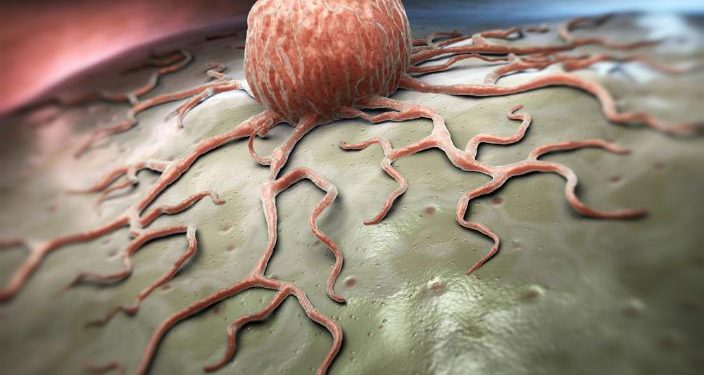A cancer diagnosis can be scary for a patient. It is important to get support from family and friends. Support can help ease symptoms and improve quality of life. It is also important to be able to afford treatment.
Doctors use physical exams and imaging tests to diagnose cancer. They may also take a biopsy. This is a small piece of tissue from the suspected area that is examined under a microscope for cancer cells.
Cancer has spread to other parts of the body
When cancer spreads to other parts of the body, it is called metastasis. This can happen in several ways. Sometimes, the cancer cells can break apart from their original location and travel through the blood to other areas of the body. Often, these cancer cells will attach to and grow in other organs, such as the liver or lungs. Depending on the type of cancer, and how far it has spread, the person may have different symptoms.
Most types of cancer are staged according to how far the cancer has grown, and how much it has spread from its original location. The staging system is usually based on a combination of numbers and letters. The T rating refers to how large the tumor is, and the N rating refers to whether or not nearby lymph nodes are affected. In addition, some cancers are staged based on how abnormal they look under a microscope. Cancers that have more genetic damage are considered to be more advanced, and tend to grow faster than those that are well-differentiated.
Some types of cancer can be cured before they spread to other parts of the body. Cancers that are diagnosed in stages 0 and 1 are considered localized cancers. They haven’t spread beyond a small area in the tissue where they started, or to the nearby lymph nodes.
Other types of cancer can spread to the lungs or the liver before they reach stage 4. In these cases, the patient may have difficulty breathing, coughing, fatigue, fever, and jaundice (high levels of bilirubin in the skin and whites of the eyes).
In some cases, cancer that has spread to the lungs or the liver can affect the brain. This can cause headache, weakness and a lack of energy. It can also affect the way a person thinks and acts, and can cause mood swings and confusion. Some people who have this kind of cancer may feel like they don’t want to socialize anymore, and can become more withdrawn or depressed. They may also experience loss of appetite and weight loss.
Treatment options
The type of treatment a person gets at stage 4 depends on the cancer and where it has spread. The goal of treatment is to prevent the cancer from spreading more, relieve pain and other symptoms and improve quality of life. Treatment options include surgery, chemotherapy and radiation. Palliative care may also be helpful in reducing stress, pain and other symptoms.
When a patient is diagnosed with stage 4, it means the cancer has spread to other parts of the body. Cancers that have spread to other parts of the body are called metastatic cancer. Stage 4 is the highest stage of cancer that has spread to other parts of the body.
Doctors use a system called TNM to measure how advanced a cancer is and what treatments are available. The T stands for tumor (the size of the cancer), N for lymph nodes and M for metastases (spread to other parts of the body). A TNM score of 1 indicates a very advanced disease.
The first step in treating cancer at stage 4 is usually chemotherapy. Chemotherapy is a group of drugs that kills cancer cells and stops them from growing. There are many types of chemotherapy drugs, and doctors choose the right one based on the cancer and the patient’s general health.
For example, women with hormone-receptor positive cancers who have a PIK3CA mutation might benefit from a drug called exemestane plus everolimus ( Afinitor). These medications can help prolong survival even after the cancer has stopped responding to hormone therapy. Other drugs that might be used include fulvestrant (Faslodex) with alpelisib, or the antibody-drug conjugate fam-trastuzumab deruxtecan (Enhertu).
Radiation isn’t typically used to cure cancer at this stage, but it can help control symptoms and reduce pain. The doctor can use a type of radiation called stereotactic body radiation to target the site where the cancer is located.
When cancer has spread to other organs, it is often hard to remove the entire tumor with surgery. However, if the sites of spread are small and there aren’t very many of them, doctors might be able to remove some of the cancer. If the cancer has spread to bones, the doctor might prescribe drugs that strengthen the bones, such as pamidronate (Aredia) or denosumab (Zometa).
Survival rates
In stage 4 cancer, tumors have spread to distant parts of the body, which may be hard for doctors to see. The prognosis for this type of cancer is typically not good, but there are treatment options that can help manage symptoms and improve quality of life. However, it is important to remember that cancer is an unpredictable disease and no two people are the same.
The survival rates for different types of cancers vary by stage, but overall, the 5-year survival rate declines as the cancer progresses to later stages. The number of people who live with a certain type of cancer for a certain amount of time is called the prevalence estimate. This statistic is based on data collected by the National Cancer Institute’s Surveillance, Epidemiology, and End Results (SEER) program.
SEER’s cancer statistics are broken down by stage and racial/ethnic group. This information can be useful for researchers and health care professionals because it offers a snapshot of the current state of cancer in the United States. It is also helpful for patients and their families who want to know more about their chances of survival.
These statistics can be difficult to interpret, because they are based on averages and may not reflect a person’s own experience with the disease. It’s also important to note that survival rates can be affected by many personal factors, including a person’s health status and other medical conditions.
For example, testicular cancer is almost always curable if it is detected early, in stage 0. But the chance of survival drops significantly when the cancer is found after it has spread, especially to the liver or lungs.
Survival rates also vary by race and ethnicity. Black women are less likely to be diagnosed with uterine corpus cancer in early stages, and their survival rates are lower than those of White women for all stages of the disease. This disparity is a result of long-standing structural racism that affects access to care and outcomes. Despite these obstacles, the number of cancer survivors continues to grow in the United States. This growth is due to advances in treatment and the increasing aging of the population.
Symptoms
Cancer is a complex disease, and symptoms can vary widely. Sometimes, a cancer will grow slowly and cause few noticeable changes in the body. Other times, it may develop quickly and cause symptoms that are difficult to ignore. Symptoms can include pain, fatigue, nausea, vomiting, loss of appetite, fever, or changes in skin color or texture. If you notice any unusual signs or symptoms, talk to your healthcare provider right away.
A doctor will use physical exams, imaging scans, and other tests to determine the stage of a cancer. The cancer’s stage tells doctors about the size of the tumor, its location, and whether it has spread to nearby tissues or organs. The stage of a cancer also helps doctors plan treatment. For example, if a tumor is close to a critical structure, surgery might be less effective than if it were in a different part of the body.
Depending on the type of cancer, there are several types of treatment available to help patients at this stage. Some treatments can be curative, while others focus on relieving symptoms (palliative care). Surgery is usually the first step in a cancer treatment. A surgeon can remove the bulk of a tumor or just a small portion near a critical structure, and then patients can receive radiation therapy or chemotherapy to reduce the chances of the cancer returning.
Many people with stage 4 cancer experience fatigue as their disease progresses. Fatigue can affect a person’s mood and ability to function, so it is important to have a supportive network of loved ones. You can also take steps to help prevent fatigue by eating healthy meals, exercising, and getting enough sleep.
When a mesothelioma patient is diagnosed with stage 4 cancer, it means the cancer has spread beyond the mesothelial lining to other parts of the body. This can be difficult to treat, but chemotherapy and immunotherapy can improve symptoms. These treatments can also extend survival for some stage 4 mesothelioma patients.
The most common symptoms of advanced mesothelioma are drowsiness, nausea, a lack of energy, and loss of appetite. In addition, pleural mesothelioma can cause breathing problems. Patients who are experiencing these symptoms should seek mental health resources and palliative care.









